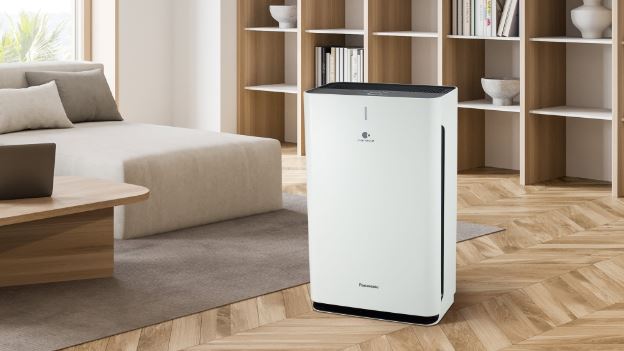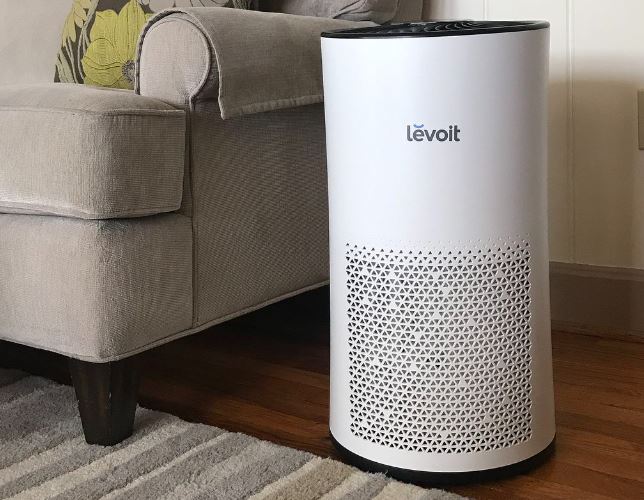In today's health-focused society, the air we breathe in has become an increasingly important consideration for individuals across the globe. With rising pollution levels and a better understanding of the effects of indoor pollutants on our health, it's no surprise that the air purifier industry is experiencing tremendous growth.
Air purifiers are machines that remove contaminants from the air in a room, improving indoor air quality. They are particularly beneficial for individuals suffering from allergies, asthma, and respiratory conditions as they can drastically decrease the amount of allergens, pollutants, and irritants in the air. Healthy individuals, too can take advantage of air purifiers, as they give added assurance and protect against airborne pathogens.
This comprehensive overview will explore in detail the world of air purifiers, exploring their benefits, the array of models available, crucial aspects to think about when selecting the right model, and optimizing your purifier's performance. By the end, you should have a comprehensive understanding of air purifiers and be able to decide confidently about whether investing in one is the best option for you and your family.

Unraveling Indoor Air Contaminants and Their Effects on Well-being
To understand why air purifiers are essential, it's vital to understand the types of pollutants they target and the possible effects of contact with these pollutants.
Indoor air pollutants can be broadly categorized into three main types:
- Particulate Matter: This includes solid particles and liquid droplets suspended in the air. Examples include dust, smoke, pollen, pet dander, mold spores, and more. Particulate matter can trigger respiratory problems and trigger allergic reactions.
- Volatile Organic Compounds (VOCs): VOCs are gases emitted from various solids or liquids. Sources of VOCs include paints, cleaning products, aerosol sprays, and pesticides. Exposure to VOCs can lead to eye, nose, and throat irritation, headaches, and nausea.
- Understanding Biological Contaminants: These include microbes such as bacteria, viruses, mold spores, and mildew. They can cause a variety of health problems, from mild allergic reactions to severe infections.
The effects of these pollutants on human health can differ considerably. For those suffering from respiratory ailments or weakened immune systems, exposure to indoor air pollutants can lead to severe complications. Even those in good health, long-term exposure to certain pollutants can impact respiratory health and overall well-being over time.

The Science Behind Air Purifiers
Air purifiers use a variety of physical and chemical processes to trap and eliminate airborne pollutants. Understanding the underlying principles employed by purifiers will help you grasp how they work and the variety of options on the market.
Here are the primary mechanisms and innovations used in air purifiers:
- Mechanical Filtration: This is the most common method used in air purifiers. It involves using filters designed to trap airborne particles as air is drawn into the purifier. The filtration media varies, each designed to capture specific types of particles. For example:
- Pre-filters: The First Line of Defense: These are usually the initial barrier, capturing larger particles like dust, hair, and similar larger particles.
- HEPA Filtration: Unparalleled Performance: HEPA filters are highly effective at trapping ultrafine particles, including dust mites, pollen, bacteria, and viruses. To be labeled a true HEPA filter, it must effectively capture particles as small as 0.3 microns, with a minimum efficiency of 99.97%.
- carbon filtration: These filters are designed to adsorb odors, VOCs, and gaseous pollutants.
- The Power of Ionization: Ionizers use electrical charges to create ions with a negative charge, which bind to particles in the air. The particles become charged, causing them to stick to surfaces or the purifier.
- Ozone Generators: Some air purifiers use ozone as a potent disinfectant to destroy contaminants. While effective, ozone can also be harmful to human health so these types of purifiers should be used with care and only when no one is present.
- UV Light: Shining a Light on Purification: UV light can be used to destroy biological contaminants like bacteria, viruses, and mold spores. UV light is commonly paired with filtration to capture particles first, followed by UV light to neutralize any remaining biological threats.
The Ultimate Air Purifier Guide
With a wide array of options available, selecting the right air purifier can be a daunting task. It's important to consider a range of criteria to ensure you make the best decision for your particular needs and room size.
Here are some crucial points to consider:
- Sizing Up the Room: Air purifiers are typically rated according to room size, so it's important to choose a model that can effectively handle the square footage of the room. Most purifiers will list a maximum room size or a Clean Air Delivery Rate (CADR), which indicates the amount of purified air circulated per minute.
- Targeted Pollutants: Identify the particular contaminants you want to target. If you suffer from allergies, look for a purifier with a HEPA filter. For odor removal, consider a model with a carbon filter. If you're concerned about bacteria and viruses, a purifier with UV light disinfection might be best.
- Whisper-quiet Performance: Air purifiers can produce a range of noise outputs, so if you plan to use it in a quiet bedroom or tranquil space, look for models with a sleep mode or quiet setting.
- Long-term Considerations: Consider the ongoing costs and maintenance requirements of the purifier. HEPA filters, for example, typically need to be replaced every 6-12 months, depending on use and environmental factors. Factor in the cost of replacement filters when making your choice.
- Enhancing Your Experience: Many purifiers offer innovative smart capabilities like automatic modes, air quality monitoring, and wireless control, allowing remote control and monitoring. These features can enhance the convenience and effectiveness of your purifier.
Unlocking the Full Potential of Your Air Purifier
Once you've made your selection and installed it, there are several things you can do to ensure it operates at peak performance and delivers the greatest advantages:
- Place it in the Right Location: Position your purifier in an central location, free from obstacles, to ensure efficient air circulation. Avoid placing it near external openings as drafts can interfere with its performance.
- Round-the-clock Operation: For the best results, it's recommended to run your purifier around the clock. Many models have low-energy settings or automatic modes that adapt to the air quality, so you can maintain clean air without running up a huge energy bill.
- Filter Maintenance: Regularly check and replace filters as recommended by the manufacturer. Over time, filters become saturated with particles, affecting efficiency. Mark the date of replacement on your calendar so you don't forget.
- Reducing Indoor Contaminants: Alongside using an air purifier, take steps to minimize indoor air pollutants. This could include frequent dusting and vacuuming, opting for natural cleaning solutions, and reducing chemical or aerosol usage.
Comments on “Tech Meets Wellness: Smart Air Purifiers for the Modern Home”